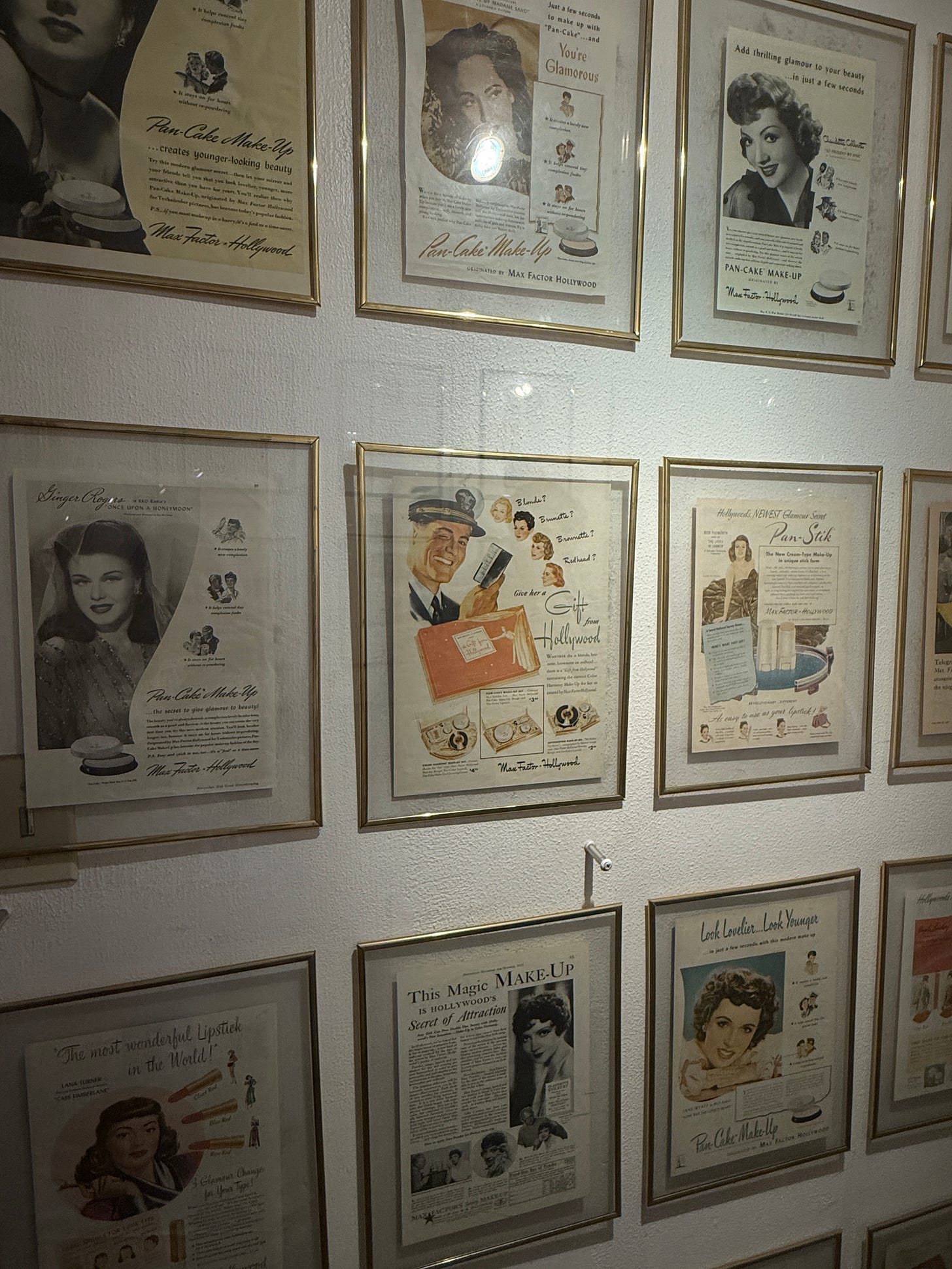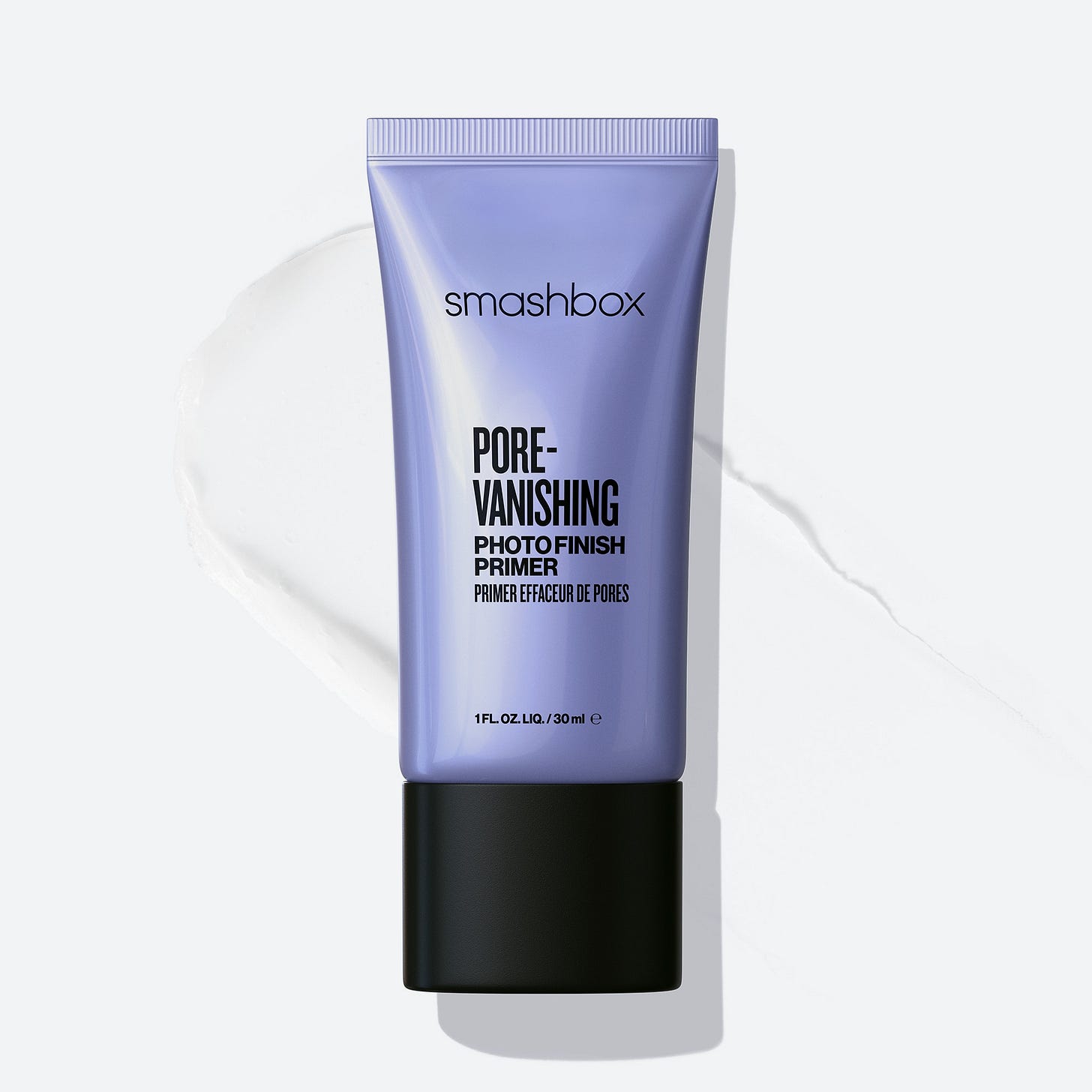Before Sephora, There Was This Place
A visit to one of my favorite historic sites in Los Angeles: The Hollywood Museum in the Max Factor Building.
Welcome to Celebrity Secret Weapon, a column about the imagemakers behind some of Hollywood’s most famous (and interesting) looks. Max Factor, the Polish-American businessman and beautician known for shaping the cosmetics industry as we now know it, had a major impact on Hollywood. And his great-grandson continues his legacy through his own almost 30-year-old household beauty brand. Keep reading to find out which one.
In the golden era of Hollywood, actors and actresses were beholden to studios. As employees, they would appear in films their respective studio overlords produced; now, actors are gig workers that jump from studio to studio depending on the role (and their relationships). Perhaps this was a blessing — guaranteed work! — if your films were hits. But before they were stars, an imagemaking session took them from actress to hot commodity.
The Max Factor Building (formerly the Max Factor Salon) on Highland is where most of these makeovers took place, and today, it’s the sprawling three story Hollywood Museum now showcasing artifacts of all kinds, from film and television to beauty history. It was here startlets would get “bee stung lips” and “brownette” hair color; men would even come to get wigs to portray stronger hairlines on-screen — a sign of manliness, apparently. And while Max Factor specialized in movie makeup, he was the first to make it available to the public at his salon.


I visited the museum in 2019 with Max Factor (the brand) — they graciously invited me to tagalong on a trip planned here in Los Angeles for international editors, despite the brand not being available in the U.S. anymore. I loved learning the rich history from museum founder and President Donelle Dadigan and recommend a visit to anyone who hasn’t been.
I was reminded of Factor’s history in Hollywood when I attended the Hollywood Beauty Awards earlier this year. Davis Factor, Factor’s great-grandson, received the Outstanding Achievement in Photography award — and while he is a phenomenal photographer, it was humorous that he wasn’t getting a beauty award, given not only his family’s contributions to the cosmetic industry as a whole, but the fact that his own brand, Smashbox, is almost 30-years-old. (Missed opportunity, HBA!)
I asked the team if Davis would consider touring the museum with me and before I knew it, we were traipsing around the restored pink and gold-leaf lobby together. “I can feel my family here,” Davis told me, who used to visit the salon as a child.
A Message From Our Sponsor
Smashbox’s Pore Vanishing Primer is the ultimate soft-focus, pore-blurring primer designed to perfect skin instantly while locking in makeup all day. Built on nearly three decades of primer expertise, this next-generation formula:
Instantly blurs pores, fine lines, and texture for a seamless, real-life filter effect
Controls shine while maintaining a breathable, skin-like finish
Grips makeup for all-day wear, preventing creasing and fading
Goes beyond traditional mattifying primers, offering a silky, comfortable feel without dryness
Use code POREVAN20 for 20% off your purchase through 9/7/25.
Factor is responsible for modern makeup we know today — it’s why he’s known as the “Godfather of Cosmetics.” His Supreme line of Flexible Greasepaint made it so makeup on-camera looked natural for the first time; typically, actors were used to applying stick paints, which was thick and would crack. It was theater makeup. But for up-close filming, they needed something natural that would allow actors to emote. Flexible Greasepaint was a cream that gave coverage with a thinner application. Factor innovated by putting it in a tube instead of a pot.
In 1918, Factor introduced the concept of “Color Harmony.” It’s the basis of how we think about makeup to this day: highly personal. He believed makeup should be tailored to your complexion. Hair color was also a part of the equation. Makeup should enhance your individual features — meaning it’s not one size fits all. He would create and sell makeup under this concept. At the museum, you’ll notice countless Max Factor ads on the walls including famous faces with Color Harmony messaging — starlets like Marilyn Monroe earned $1 per advertisement; Factor partnered with studios to promote their stars and films. (Sydney Sweeney would have LOVED this.)


Then, in the 1930s, three-strip Technicolor film allowed productions to film full-spectrum color instead of black and white, which should have been thrilling, except greasepaint wasn’t a good fit for this new technology. It covered imperfections, but given its heavy sheen, it reflected the actors’ surroundings onto their face, tinting their skin. Actors did not want to work on Technicolor productions because of this, despite the innovation.
So Factor created Pan-Cake makeup, a “powder cream” that was water activated, easy to apply, matte and yet water-repellent. It went onto the skin as liquid and dried into a powder. Catering makeup to film sets runs in the family: nearly 60-ish years later, Davis would launch Smashbox Cosmetics and the brand would create a new innovation: the Photo Finish Primer, which helped makeup last through long shoot days and left the skin looking virtually flawless on-camera, born from his experience photographing models and actresses.
One of the most fun aspects of the museum is visiting the color theory rooms, where stars would get makeup suited for their hair color and complexion: green for redheads, blue for blondes, pink for brunettes and a pale yellow (or maybe cream?) for brownettes. Brownette is no longer a term we use, but it was considered a light brunette that most people fall in, including Judy Garland and Bette Davis. These rooms dictated if you needed to alter your hair color or simply needed a makeup update to pull it all together.




A Message From Our Sponsor
Smashbox’s Pore Vanishing Primer is the ultimate soft-focus, pore-blurring primer designed to perfect skin instantly while locking in makeup all day.
Use code POREVAN20 for 20% off your purchase. Eligible through 9/7/25.
Factor made Rita Hayworth a brownette from her original deep brown hair. He took Lucille Ball from blonde to red — she was originally a “mousy brunette” as Dadigan shared with me.
He created innovations such as the mascara wand (thank you!!!) and the first concealer; he invented the word “makeup.” He democratized cosmetics — not unlike how social media has democratized the art of using and applying it. He created the Beauty Micrometer (or the Beauty Calibrator), a terrifying machine in both appearance and concept, as it measured imperfections of the face so that corrective makeup could be used to enhance or subdue depending on the “ailment.” Thankfully, the device did not become widespread. (We now have apps and filters to give us complexes at home…) Perhaps not his best invention.


I could lead group tours at The Hollywood Museum at this point — I still want to host one of those Hollywood tour bus excursions one day! — but instead of spoiling it all, I recommend visiting for yourself. The first floor is all makeup history, but there are several other floors full of donated and acquired Hollywood memorabilia. If you’re a cinephile, love Hollywood history, or maybe want a good Reuben to eat at Mel’s, drop in.










